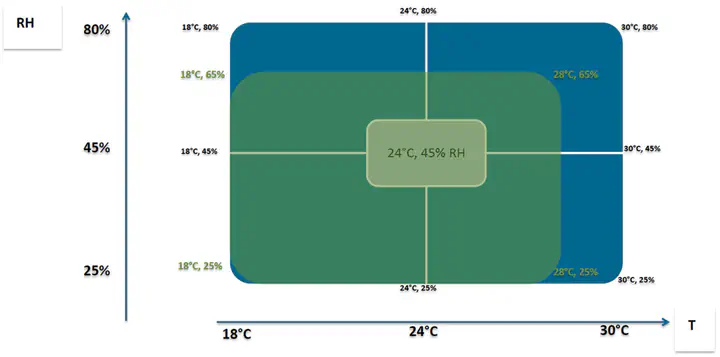Analysis of Impact of Humidity and Temperature on Excimer Laser Ablation of Polyethylene Terephthalate, Polymethylmethacrylate, and Porcine Corneal Tissue
Abstract
Background and Objectives
To analyze the impact of humidity and temperature on excimer laser ablation of polyethylene terephthalate (PET), polymethylmethacrylate (PMMA) and porcine corneal tissue, and an ablation model to compensate for the temperature and humidity changes on ablation efficiency.
Study Design/Materials and Methods
The study was conducted using an AMARIS 1050RS (Schwind eye-tech-solutions) placed inside a climate chamber at ACTS. Ablations were performed on PET, PMMA, and porcine cornea. The impact of a wide range of temperature (~18°C to ~30°C) and relative humidity (~25% to ~80%) on laser ablation outcomes was tested using nine climate test settings. For porcine eyes, change in defocus was calculated from the difference of post-ablation to pre-ablation average keratometry readings. Laser scanning deflectometry was performed to measure refractive change achieved in PMMA. Multiple linear regression was performed using the least square method with predictive factors: temperature, relative humidity, time stamp. Influence of climate settings was modeled for pulse energy, pulse fluence, ablation efficiency on PMMA and porcine cornea tissue.
Results
Temperature changes did not affect laser pulse energy, pulse fluence (PET), and ablation efficiency (on PMMA or porcine corneal tissue) significantly. Changes in relative humidity were critical and significantly affected laser pulse energy, high fluence and low fluence. The opposite trend was observed between the ablation performance on PMMA and porcine cornea.
Conclusions
The proposed well-fitting multi-linear model can be utilized for compensation of temperature and humidity changes on ablation efficiency. Based on this model, a working window for optimum operation has been found (temperature 18°C to 28°C and relative humidity 25% to 65%) for a maximum deviation of ±2.5% in ablation efficiency in PMMA and porcine corneal tissue. Lasers Surg. Med. © 2019 The Authors. Lasers in Surgery and Medicine Published by Wiley Periodicals, Inc.
